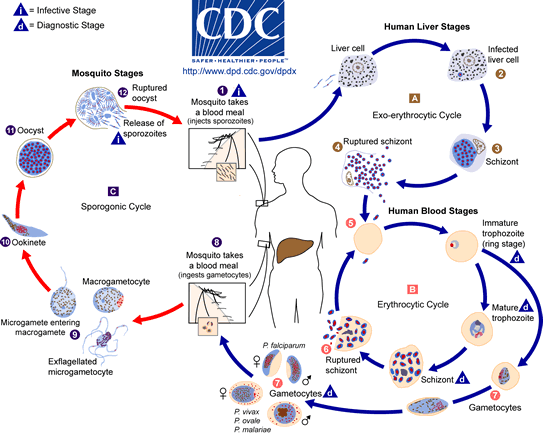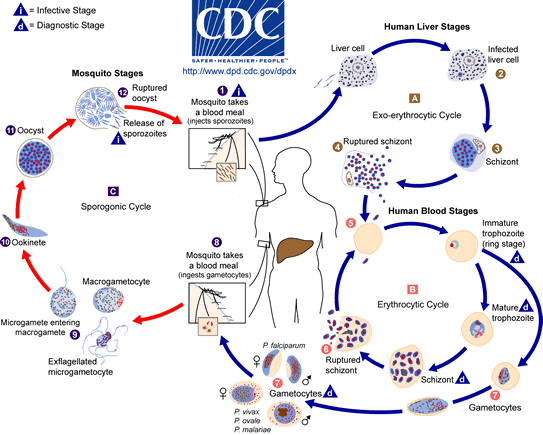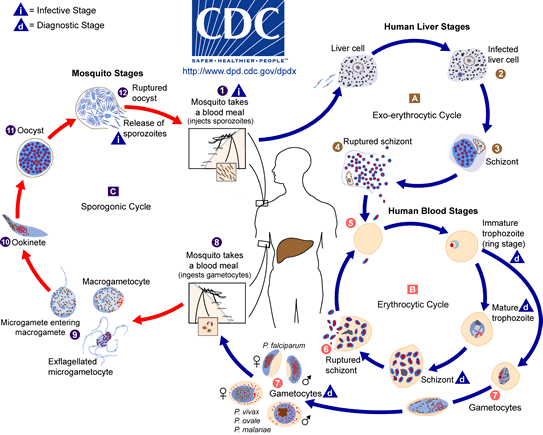QUESTION
What is the life cycle of malaria?
ANSWER
The life cycle of malaria is complex, involving a definitive host, or vector, which for human malaria is a mosquito of the genus Anopheles, and also a human host. Inside both, the malaria parasite undergoes several different transformations and reproductive cycles, which are detailed in the schematic below.
You may also view a video of malaria life cycle.



